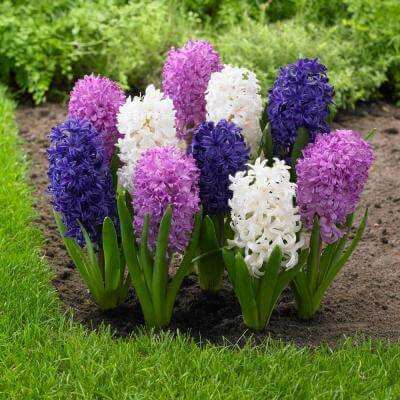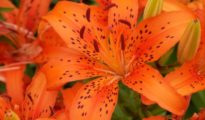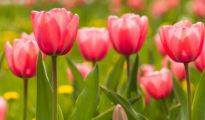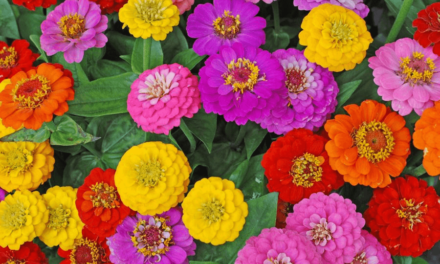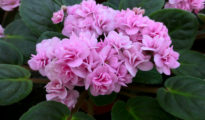Hyacinths are one of the most beloved and fragrant flowers in the world. With their stunning colors and delightful scent, they make a great addition to any garden or indoor space. But growing hyacinths can be a bit tricky, especially for those new to gardening. In this guide, we will cover everything you need to know about how to plant hyacinths successfully.

What Are Hyacinths?
Hyacinths are native to the eastern Mediterranean region and are part of the Asparagaceae family. They come in a wide range of colors, including pink, purple, white, yellow, and blue, and are known for their strong fragrance. Hyacinths are often associated with springtime, but they can be grown year-round with proper care.
Choosing the Right Hyacinth Bulbs
The first step in growing hyacinths is to choose the right bulbs. Hyacinth bulbs are typically sold in the fall, and you should look for bulbs that are firm, plump, and free from mold or damage. It's also important to choose bulbs that are the right size for your container or garden bed. Larger bulbs will produce larger flowers, but they also require more space to grow.
Preparing the Soil
Hyacinths prefer well-drained soil that is rich in organic matter. Before planting, it's important to prepare the soil by loosening it and removing any rocks or debris. You can also add compost or other organic matter to improve the soil's nutrient content.
Planting Hyacinth Bulbs
Hyacinths can be planted in the fall or early winter, depending on your location. To plant hyacinth bulbs, dig a hole that is three times as deep as the height of the bulb. Place the bulb in the hole with the pointed end facing up and cover with soil. Water thoroughly after planting.
Caring for Hyacinths
Once your hyacinths are planted, it's important to care for them properly to ensure healthy growth and beautiful blooms. Here are some tips for caring for hyacinths:
Watering: Hyacinths require consistent moisture, but they don't like to be waterlogged. Water deeply once a week or as needed to keep the soil moist but not waterlogged.
Fertilizing: Hyacinths don't require a lot of fertilizer, but you can give them a boost with a slow-release fertilizer applied in the spring.
Mulching: Mulch can help to retain moisture and keep the soil cool around your hyacinths. Apply a layer of mulch in the fall or early winter.
Dealing with Pests and Diseases
Hyacinths are generally hardy plants that don't suffer from many pest or disease problems. However, they can be susceptible to fungal diseases if the soil is too wet. To prevent fungal diseases, make sure to plant hyacinths in well-draining soil and avoid overwatering. You can also treat fungal diseases with a fungicide if necessary.
Harvesting and Storing Hyacinth Bulbs
After your hyacinths have finished blooming, you can harvest the bulbs for storage or replanting. To harvest the bulbs, wait until the foliage has turned yellow and died back. Dig up the bulbs and gently remove any soil or debris. Store the bulbs in a cool, dry place until you are ready to replant them in the fall.
Using Hyacinths in Floral Arrangements
Hyacinths make a beautiful addition to floral arrangements, both as a cut flower and as a potted plant. To use hyacinths in a floral arrangement, cut the stems at an angle and place them in a vase with fresh water. Hyacinths will continue to bloom for up to a week, making them a great choice for a long-lasting bouquet. They also pair well with other spring flowers like tulips and daffodils.
How to Grow Hyacinths Indoors
Hyacinths can be grown indoors in pots or containers for a beautiful burst of color during the winter months. To plant hyacinths indoors, choose a pot that is at least 6 inches deep and has drainage holes. Plant the bulbs in the fall and keep the pot in a cool, dark place for 12-14 weeks to allow the bulbs to chill. After this chilling period, move the pot to a sunny location and water as needed.
Planting hyacinths can be a rewarding experience for gardeners of all levels. With their beautiful colors and sweet fragrance, hyacinths are a delightful addition to any garden or indoor space. By choosing the right bulbs, preparing the soil, and providing proper care, you can enjoy beautiful blooms year after year.

